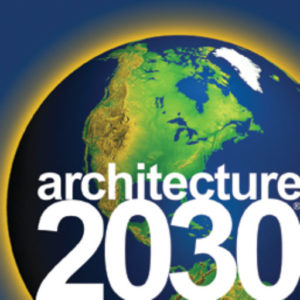2030 Curriculum Project: New Courses
February 2017 | announcements | education

Five Additional Courses Selected for 2016-2017 Academic Year
New courses have been added to the 2030 Curriculum Project, Architecture 2030’s initiative to support courses at US architecture and planning schools that ‘fully integrate lessons in energy use, emissions, and resiliency into the widest possible range of projects and topic areas, and across all year levels.’
These five courses join others selected for the 2030 Curriculum Project in the fall of 2016, recently called ‘The 7 Best Sustainable Design Courses in America’ by Metropolis magazine.
All twelve courses represent creative and resourceful efforts by faculty and program chairs to integrate critical issues of sustainability in new and unique ways. These are innovative models for transforming the way sustainable design is taught in US architecture and planning schools, particularly in core and early design studios, history courses, electives, and other program areas where this material is not traditionally or adequately addressed.
Architecture 2030 looks forward supporting these inspiring faculty and sharing the successful outcomes of their teaching.
Here are the details on the five new courses:
| UC Berkeley, Environmental Design Gabriel Kaprelian and A. Ghigo DiTommaso, with Chrissie Bradley DISC*2017 (Design and Innovation for Sustainable Cities) Studio, Summer 2017 |
DISC* is an intensive five-week summer program that explores an interdisciplinary and multi-scalar approach to design and analysis in the urban environment. Through lectures, urban seminars, workshops, field studies, and studio work, students will engage in discourse and design that aim to address the challenges of urbanism with innovative and sustainable solutions. DISC* 2017 will focus on the urbanized waterfront around the San Francisco Bay Area – addressing population increase, social inequity, infrastructure needs, and the effects of climate change and sea level rise. |
| UMASS Amherst, Architecture Ajla Aksamija ARCH 601-1 Graduate Design Studio IV, Spring 2017 |
This high-performance building design studio is paired with an elective seminar, ARCH 591 S-1 Sustainable and High Performance Facades. The design problem is a ZNE research laboratory in East Boston. Instruction will focus on energy analysis and simulation, the integration of passive and active building systems, new materials for high-performance envelopes, and the design process for optimizing building performance. |
| University of Oregon, Architecture Brook Muller ARCH 4/584 Intermediate Architectural Design Studio: ‘Hydro-Logical Architecture for the Urban Watershed,’ Winter 2017 |
This studio highlights the inseparability of water and energy concerns. Site and building water systems (for rainwater harvest, conveyance, treatment, recycling, discharge, etc.) can drive planning, programming, and other design decisions in high-performance buildings, and can even be a part of passive solutions for heating and cooling. A team of outside consultants advised in crafting the design brief and will assist students and participate in reviews throughout the quarter. |
| Portland State University, Architecture Corey Griffin and B.D. Wortham-Galvin, with Kalina Vander Poel ARCH 232 Architecture and Cultural History III, with Building Science Lab to Advance Teaching (BUILT) Integration, Spring 2017 |
This course integrates building science performance analysis with an architectural history survey course. During a four-week learning unit at the beginning of the semester, students will work in teams to collect and analyze data from historic buildings in Portland using tools and training provided by BUILT. Awareness and understanding of building performance in the historic context will complement other analyses of these buildings over the course of the term. |
| University of Wyoming, Civil & Architectural Engineering Gang Tan and Anthony Denzer ARE 4920 Energy Engineering and Economics, Spring 2017 |
Taught by members of the Building Energy Research Group (BERG), this new project-based course relates design decisions to the economic realities of energy use and policy. This course examines the energy chain from exploration and production to consumption. Students will learn about electricity markets, renewables, embodied energy, carbon accounting, variable pricing, and incentives, and they will use economic concepts such as return-on-investment, net present value, asset depreciation, and risk to inform design decisions for projects at multiple scales. |
Photo shows final reviews for Arch 401at Ball State University, College of Architecture and Planning – the studio participated in the 2030 Curriculum Project pilot. The jury are (left to right): Lora Teagarden, AIA, RATIO Architects; Craig von Deylan, AIA , BLACKLINE; Michele Chiuini, Professor of Architecture, Ball State University; Anthony Guida, AIA, Architecture 2030; Drew White, FAIA, AXIS Architecture.
ABOUT US
Architecture 2030’s mission is to rapidly transform the built environment from the major contributor of greenhouse gas emissions to a central solution to the climate crisis.



